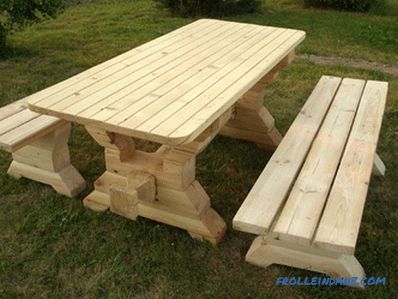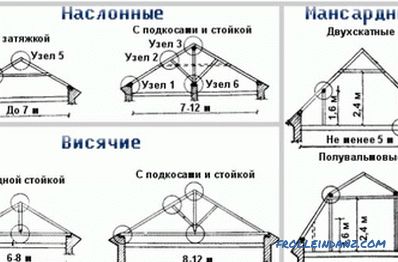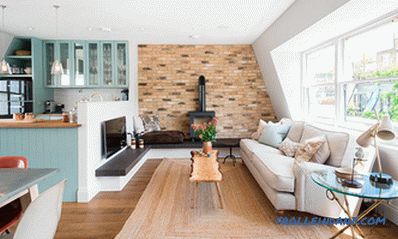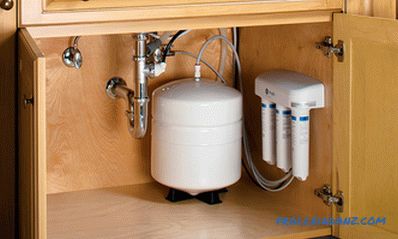Any metal doors that are installed at the entrance to an apartment or garage, over time, lose their original appearance and need a so-called redecoration. This type of repair assumes, as is well known, the updating of the protective painting layer applied in the process of manufacturing the structure. Before you paint the metal door yourself, it is advisable to familiarize yourself with the features of the procedures associated with the application of a protective coating on metal surfaces. In the process of familiarization with these procedures, as a rule, one has to deal with the following questions:
- the procedure for preparing the surface for painting;
- the choice of coloring composition;
- and finally , the choice of method of applying paint (spray, brush, roller or spray).
These steps, of course, need careful consideration.
Preparation for painting
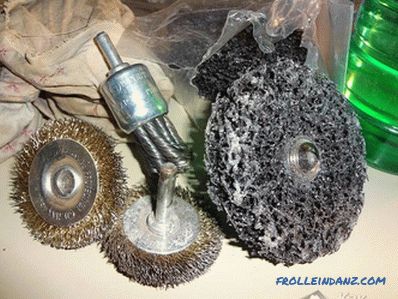 Old paint is brushed with metal brushes
Old paint is brushed with metal brushes
Preparing a metal door To staining includes the following mandatory procedures:
-
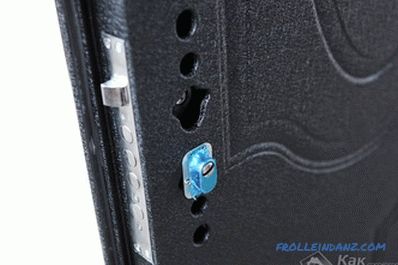 Furniture is removed from the door First of all, all removable elements (eyes, handles, patch locks, etc.). In this part of the surface that do not require painting, it is best to glue with masking tape.
Furniture is removed from the door First of all, all removable elements (eyes, handles, patch locks, etc.). In this part of the surface that do not require painting, it is best to glue with masking tape. - If there are greasy stains on the door, remove them using special solvents (acetone, white spirit or other cleansing agents).
- If the door was previously painted - it is necessary to completely remove the old layer from it. For these purposes, special compositions are used (the so-called "washes") or the usual metal brush.
- If there are places affected by corrosion on the door, it will be possible to use special rust removers or sandpaper of suitable grit.
- After thorough cleaning of all surfaces of the door leaf and structural frame, it is recommended to once again walk on them with emery paper, which will ensure maximum adhesion (adhesion) of the door material to paint.
-
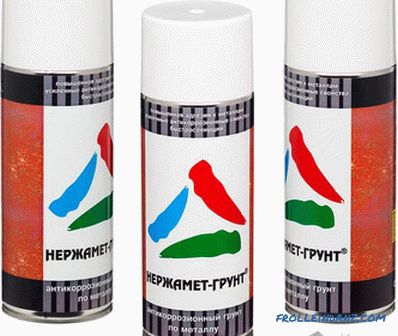 Aerosol primer Before painting a metal door, it is recommended to degrease its entire surface, which will ensure reliable painting, which allows not to re-repair during several seasons. For degreasing can be applied specially designed for these purposes compounds, or traditional white spirit and kerosene.
Aerosol primer Before painting a metal door, it is recommended to degrease its entire surface, which will ensure reliable painting, which allows not to re-repair during several seasons. For degreasing can be applied specially designed for these purposes compounds, or traditional white spirit and kerosene. - If any irregularities, chips or cracks are found on the metal surface, it will be necessary to putty them using ordinary automotive putty. Having repaired the problem areas, you should once again walk on them with fine emery cloth, and then thoroughly wipe the treated areas of the surface with a moistened rag.
- Immediately before the start of the painting procedure, it is recommended to prime the surface of the iron door using a special aerosol primer. This will provide a stable base for the subsequent application of dye and significantly extend the life of the updated product.
Preparation of the necessary material and tools
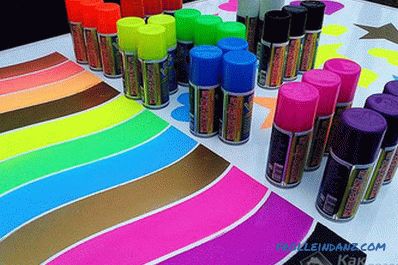 Spray paint
Spray paint
At Choosing the type of dye and the method of painting the iron door is most convenient to use a standard aerosol spray, which can be charged with a dye to almost any taste. Using this method of applying the dye will provide you with a wide choice of colors and shades, including the possibility of obtaining a protective layer with special effects (metallic or nacre). In addition, for painting a metal door, you can use such familiar tools as a brush, roller or spray gun.
 The top can be varnished
The top can be varnished
To fix the applied coloring matter, you can use a special acrylic-based spray varnish . Thus, for the qualitative painting of your metal door you will need the following materials and tools:
- acrylic enamel in an amount sufficient to process the entire surface of the door (for these purposes, 2-3 containers are usually enough);
- a spray of acrylic-based spray paint (glossy or matte);
- some sandpaper and a special metal brush needed for the final surface cleaning;
- masking tape or film (for covering surfaces not needing color;
- slightly th a basin of water, old rags and any means at your disposal cleaner.
Features of the formation of the paint layer
When applying the dye to metal surfaces by any of the previously mentioned methods, you must follow these rules:
- Before you start painting do-it-yourself door construction, it is necessary to thoroughly shake the container with the dye chosen by you, which will ensure that the latter is mixed to the desired consistency.
- In order to avoid the formation of smudges when applying a protective coating, you should smoothly move the cartridge or spray from top to bottom, keeping it at a distance of about 25-30 cm from the surface (the procedure for working with a roller and brush will be considered separately).
- In the course of work, care should be taken to ensure that the protective layer is applied evenly over the entire surface and that all its parts are well-painted.
- When painting metal doors with a spray, a protective coating should be applied in 2-3 layers; and before the formation of each of the subsequent layers should wait for the complete drying of the previous one.
- It is not allowed to paint doors that are located in the open air, as well as during rain and sub-zero temperatures.
- After completing the painting procedures, it is necessary to leave the doors to dry (approximately 4-6 hours).
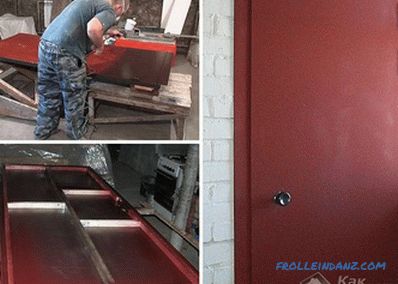 Door Coloring
Door Coloring
If you wish, give the color of already painted doors more depth and shine You can additionally treat them with acrylic spray varnish, the order of application of which is no different from that discussed earlier. The drying time of such varnish is about 1-2 hours.
The painting of doors in any of the possible ways should be carried out in a ventilated room and with the use of special eye and respiratory protection equipment.
Painting "under the tree"
In the event that you have an artistic taste, you can paint the doors under the tree using dyes of various shades.
To implement this idea, first, a so-called base layer is applied to the metal surface, which is best used as a yellow oil paint. After this layer is completely dry, you can start re-applying the dye (preferably from the same manufacturer), but this time it is already brown.
The second layer should be allowed to dry only slightly, after which, using a special trowel, you should walk this device all over the painted surface, leaving characteristic traces in the form of grooves on it.
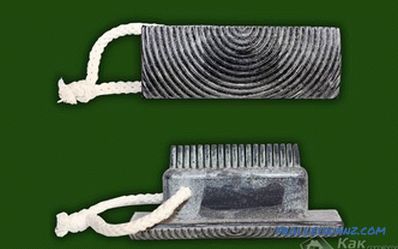 Grater for forming a wood pattern
Grater for forming a wood pattern
During each pass, the grater will remove part of the second coat of paint, while exposing the already dried lower layer, with the result that a pattern resembling a cut of wood is formed on the surface. At the final stage of the work, the resulting pattern is covered with a layer of protective varnish. The device in the form of a grater can be purchased in the department of building tools or you can make it yourself from a piece of thick rubber.
